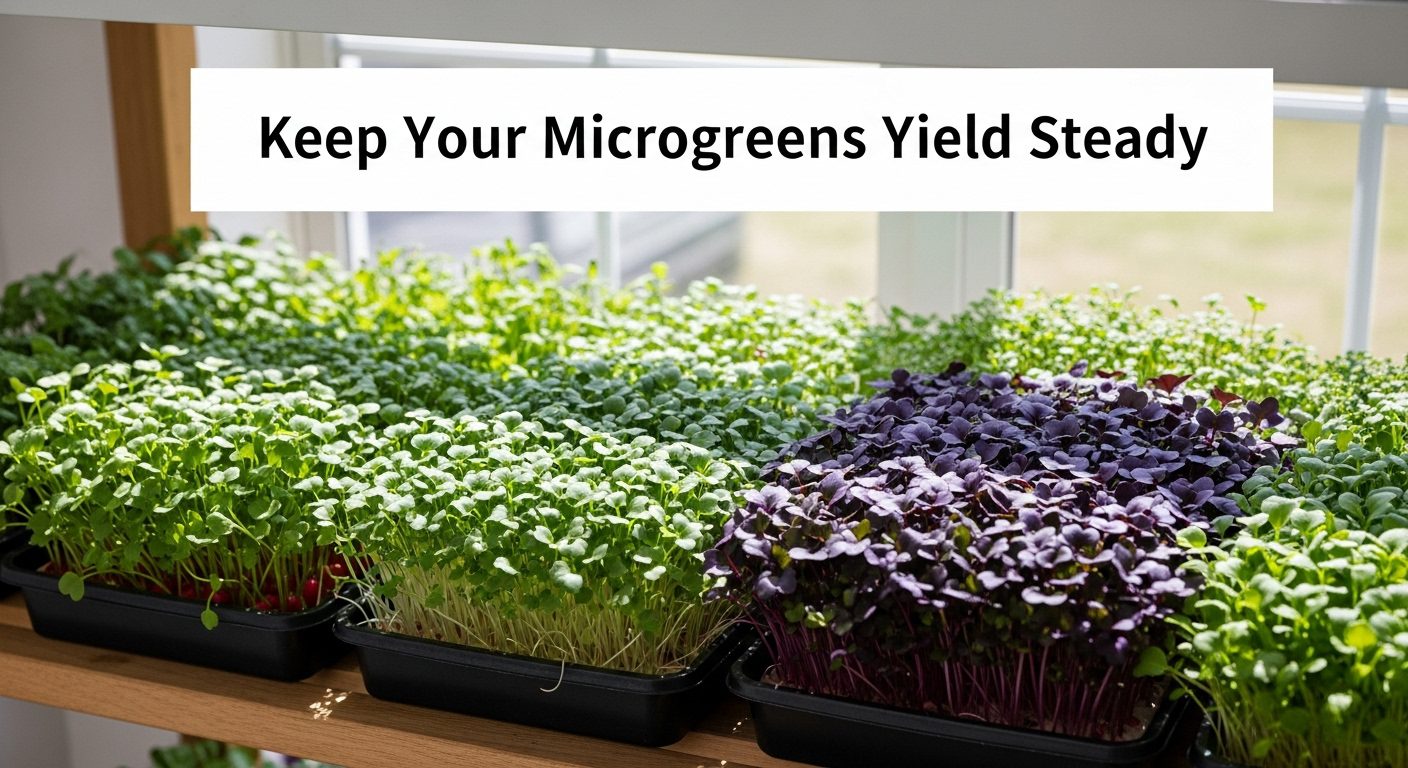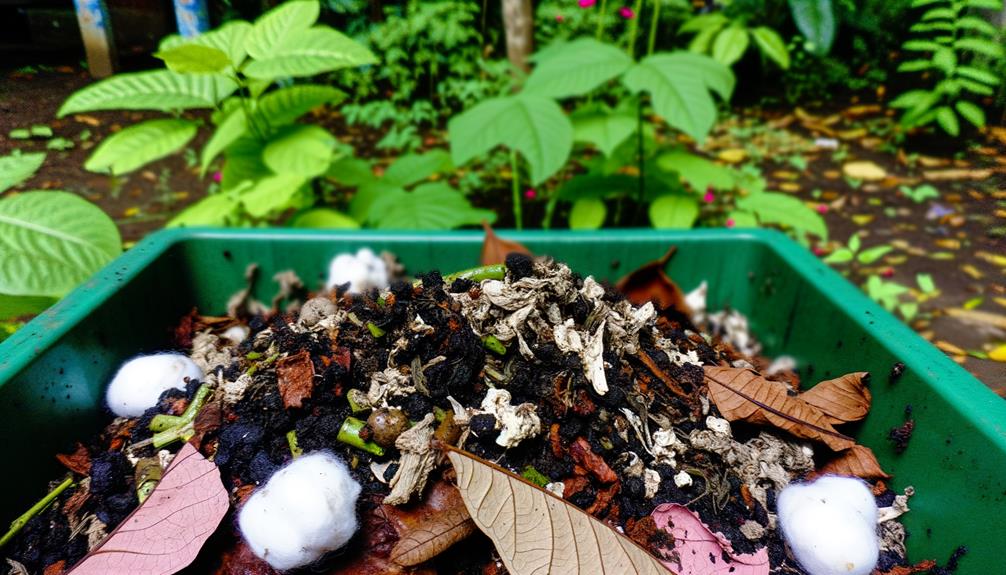

Cotton, a staple in many households, raises intriguing questions about its environmental impact, particularly regarding composting. Is cotton compostable? The answer lies in its natural composition; pure cotton fibers are biodegradable and can enrich your compost pile. However, not all cotton products are created equal—chemical residues and synthetic blends can complicate the process.
Embracing 100% cotton items not only contributes to reducing landfill waste but also supports sustainable gardening practices. As we explore the nuances of composting cotton, you’ll discover how simple choices can lead to significant environmental benefits.
Cotton is a remarkable natural fiber with unique properties that make it versatile and essential in many applications. Derived from the protective casing around cotton seeds, these fibers are primarily composed of cellulose, giving them exceptional characteristics of strength, absorbency, and softness.

From textile manufacturing to medical and craft uses, cotton balls represent just one of the many innovative ways this natural material can be utilized.
When examining the composition of cotton balls, you’ll find they’re primarily made from pure cotton fibers, which are natural and biodegradable. Cotton, originating from the cotton plant, is harvested, cleaned, and processed into soft, fluffy fibers.
The cotton origin guarantees that these fibers are plant-based and environmentally friendly. The fiber structure of cotton is composed of cellulose, which gives it strength and absorbency. These fibers are spun into a loose, cohesive form, creating the familiar, soft texture of cotton balls.
Because of their natural composition, cotton balls break down more easily in composting environments. Understanding the simple, natural makeup of cotton balls helps you see why they can be an excellent addition to your compost pile.
Cotton balls can be a sustainable addition to your composting efforts, offering an eco-friendly way to reduce waste while contributing to nutrient-rich soil. Understanding the nuances of composting cotton balls is crucial for environmentally conscious individuals looking to minimize their ecological footprint. By following specific guidelines, you can effectively incorporate these soft, biodegradable items into your composting routine.
Cotton balls are primarily made from pure cotton fibers, which are natural and biodegradable. These plant-based materials originate from cotton plants and are composed of cellulose, giving them strength and absorbency. The natural composition makes them an excellent candidate for composting.
Cotton balls typically take 5-6 months to decompose in a compost environment. Factors affecting decomposition include:
| Factor | Impact on Decomposition |
|---|---|
| Moisture Level | Speeds up breakdown |
| Cotton Type | Organic cotton decomposes faster |
| Compost Conditions | Proper aeration and balance crucial |
Environmental Benefits – Composting cotton balls helps:
Precautions Avoid composting:
By following these guidelines, you can effectively and responsibly compost cotton balls while contributing to environmental sustainability.
Cotton balls are a common household item used for various personal care and beauty routines. Understanding their environmental impact is crucial in today’s eco-conscious world. The biodegradability of cotton balls depends on their composition, with 100% natural cotton offering significant environmental advantages over synthetic alternatives.
Cotton balls made from 100% pure cotton are indeed biodegradable. These natural fiber products can break down relatively quickly in composting environments, typically taking about 5-6 months to decompose completely. The biodegradation process is influenced by several key factors:
| Factor | Impact on Decomposition |
|---|---|
| Organic Cotton | Faster decomposition |
| Conventional Cotton | Slower due to chemical treatments |
| Moisture Level | Increases decomposition speed |
| Chemical Residues | Can slow down or inhibit breakdown |
Environmental Considerations – While cotton balls are biodegradable, it’s important to note some critical environmental aspects:
Best Practices for Eco-Friendly Use:
The biodegradability of cotton balls makes them a more environmentally friendly option compared to synthetic single-use products, particularly when sourced from organic and sustainably produced cotton.
Natural and synthetic fibers are two distinct types of textile materials with unique characteristics that impact their performance, sustainability, and applications across various industries. Their differences helps consumers and manufacturers make informed choices about fabric selection.

Natural fibers are derived directly from plants, animals, or minerals with minimal processing. Examples include cotton from plants, wool from sheep, and silk from silkworms. Synthetic fibers are entirely manufactured in laboratories using chemical processes, typically from petroleum-based polymers like polyester, nylon, and acrylic.
| Characteristic | Natural Fibers | Synthetic Fibers |
|---|---|---|
| Source | Plants, animals, minerals | Chemical polymers |
| Comfort | More breathable, softer | Less breathable, can cause discomfort |
| Durability | Generally less durable | Highly durable and wrinkle-resistant |
| Environmental Impact | Biodegradable, renewable | Non-biodegradable, petroleum-based |
| Cost | More expensive | More cost-effective |
| Maintenance | Requires more careful care | Easy to maintain |
Cotton balls are versatile, multi-purpose tools that have become essential in households, medical settings, and personal care routines. These soft, absorbent items are made from pure cotton fibers and offer a wide range of practical applications that extend far beyond their traditional use in makeup removal. From healthcare to home cleaning, cotton balls provide a simple yet effective solution for various everyday needs.
Cotton balls possess unique characteristics that make them incredibly valuable in multiple domains. Their natural composition and manufacturing process ensure superior quality and performance across different applications.
These properties helps users maximize their potential and appreciate their versatility.
Medical professionals and healthcare providers rely on cotton balls for numerous critical procedures. These sterile, soft, and absorbent tools play a crucial role in wound management, patient care, and maintaining hygienic medical environments.
Their ability to quickly absorb liquids and provide gentle contact makes them indispensable in clinical settings.
Medical Applications
Cosmetic and Personal Care Uses – Beauty enthusiasts and skincare professionals consider cotton balls essential tools in their daily routines. They serve multiple functions in personal grooming, from precise makeup application to gentle product removal. Their soft texture ensures minimal skin irritation while providing effective cleansing and beauty maintenance capabilities.
Beauty and Skincare
Homeowners and cleaning enthusiasts discover numerous innovative uses for cotton balls beyond traditional applications. These versatile items can solve unexpected household challenges, offering creative solutions for stain removal, surface cleaning, and decorative purposes. Their adaptability makes them a valuable resource in everyday home maintenance.
Innovative Home Uses
Pro Tip: Always choose high-quality, pure cotton balls for the best performance across various applications.
Instead of using cotton balls, consider switching to reusable alternatives like bamboo pads or washable cloth rounds. These cotton alternatives are great eco-friendly options since you can wash and reuse them multiple times, reducing waste.

Bamboo pads are naturally antibacterial and gentle on your skin, while cloth rounds can be easily laundered with your regular wash. If you prefer a more disposable but still eco-friendly choice, look for biodegradable cotton pads made from organic materials.
By making these small changes, you can notably decrease your environmental footprint. Additionally, these options might save you money in the long run, as they eliminate the need for frequent purchases.
Composting cotton is a viable option, particularly when using 100% cotton products. These fibers are natural and biodegradable, breaking down effectively in composting systems. To ensure successful composting, it’s crucial to avoid synthetic materials, which do not decompose well and can harm the compost’s health.
Additionally, maintaining proper moisture levels and balancing green and brown materials will enhance the decomposition process. Overall, choosing to compost cotton not only reduces landfill waste but also contributes to enriching the soil for healthier plant growth.
